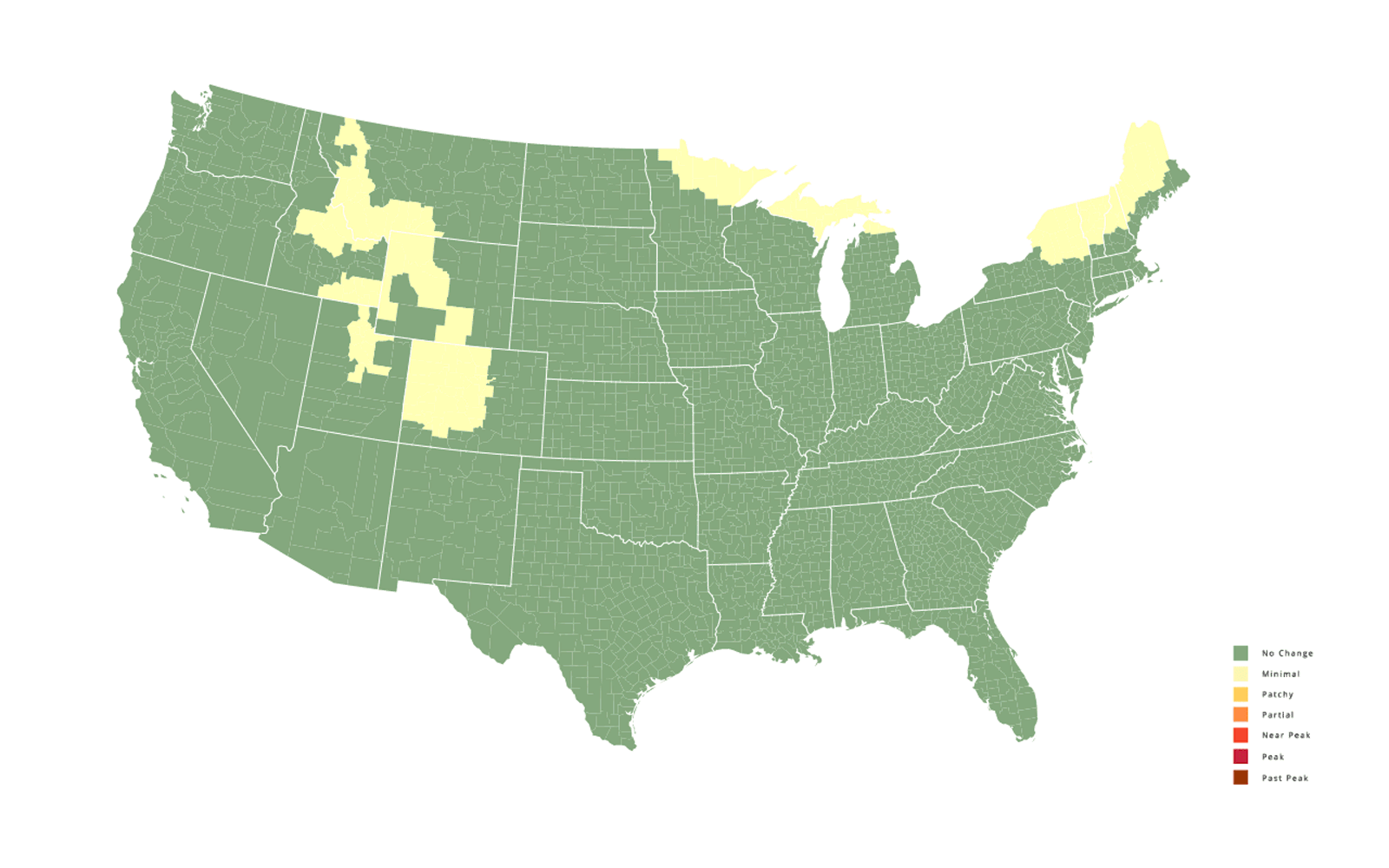This Interactive Map Shows Fall Foliage Predictions Across the U.S.
The tool will help cross-country travelers in search of colorful leaves

An interactive map published by tourism website Smoky Mountains is set to help fall foliage enthusiasts make the most of the colorful season.
As Alison Fox reports for Travel + Leisure, the map draws on data including precipitation and temperature forecasts, average daylight exposure, and soil moisture to predict the timing of leaves’ color change across the continental United States.
Users can view weekly forecasts by selecting dates listed below the color-coded map. Click September 7, and swaths of green overtake the map, underscoring the widespread absence of fall foliage. By October 19, however, shades of orange, red and brown dominate, revealing the arrival of patchy, partial, near peak or peak foliage in the northern and western U.S. Come November 30, all but the southernmost parts of the U.S. are past peak point.
“The predictive fall leaf map helps potential travelers, photographers and leaf peepers determine the precise future date that the leaves will peak in each area of the continental United States,” Wes Melton, one of the data scientists who created the tool, says in a statement. “We believe this … will enable travelers to take more meaningful fall vacations, capture beautiful fall photos and enjoy the natural beauty of autumn.”
David Angotti, another researcher responsible for the annual publication, tells Patch’s Beth Dalbey that no forecast is “100 percent accurate.” Still, he adds, Smoky Mountains’ tool is one of the only proven to provide accurate predictions for the entire country.
Per Travel + Leisure’s Fox, the team analyzed millions of data points collected by the National Oceanic and Atmospheric Administration, as well as other private and public organizations. Dalbey writes that the researchers refine their predictive algorithm every year (this is the sixth annual iteration of the map), building on sources such as historical and forecasted temperatures, leaf peak trends, and peak observation trends to produce the final product.
According to the U.S. Forest Service, plants stop producing chlorophyll, the chemical responsible for turning their leaves green, when fall approaches and the days get shorter. This process unmasks pigments typically overpowered by chlorophyll, creating the beautiful colors associated with fall foliage.
Last year, a significant delay in fall colors’ Midwest debut led the leaf-spotting Foliage Network to deem the season “bizarre.” According to City Lab’s Linda Poon, 2018 was the first time the group recorded almost no color change by the second half of October; when the leaves finally did change, green and brown appeared more often than vibrant orange and red.
Experts say fall foliage is running similarly behind schedule in 2019. As Weather.com’s Brian Donegan reports, above-average September temperatures have delayed the timing of peak foliage by about a week.
Thanks to the warm weather, early October will likely mark the start of 2019’s prime leaf-peeping season. New England and the Rockies are experiencing peak foliage this week, so tourists seeking autumnal reds and golds should pack their bags soon and prepare to enjoy the view.
/https://tf-cmsv2-smithsonianmag-media.s3.amazonaws.com/accounts/headshot/Daily-Staff-Photos-by-Noah-Frick-Alofs-3620-317x475.jpg)
/https://tf-cmsv2-smithsonianmag-media.s3.amazonaws.com/accounts/headshot/Daily-Staff-Photos-by-Noah-Frick-Alofs-3620-317x475.jpg)